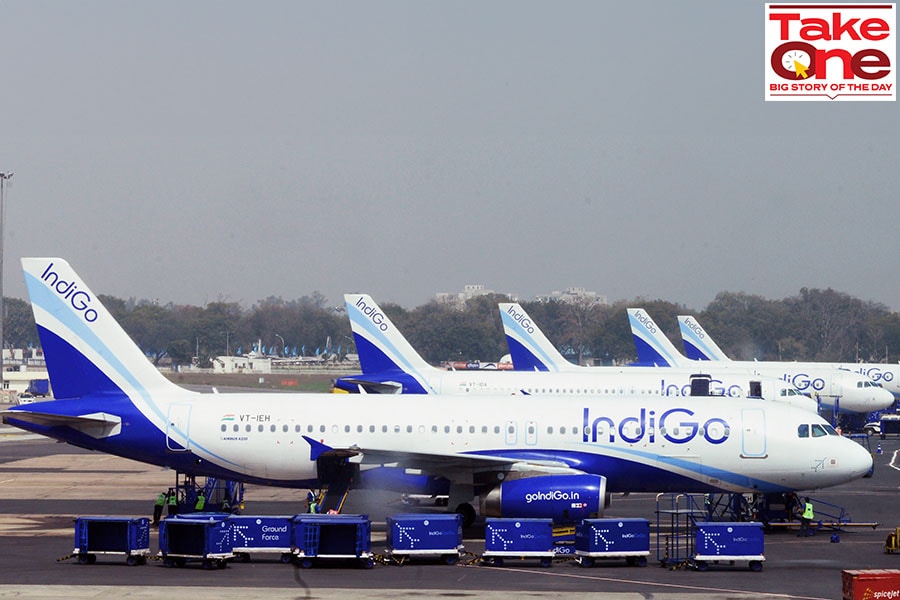
Can anything stop IndiGo?
The country's largest airline by market share reported its highest ever profit for a quarter. Revenues are at an all-time high as well. With a record order book and lean operation model, it is now gunning for more
 IndiGo has 316 aircraft and is awaiting the delivery of a record 1,330 aircraft from Airbus, making it the world’s biggest A320 family customer.
Image: Ramesh Pathania/Mint via Getty Images
IndiGo has 316 aircraft and is awaiting the delivery of a record 1,330 aircraft from Airbus, making it the world’s biggest A320 family customer.
Image: Ramesh Pathania/Mint via Getty Images
IndiGo is on a remarkable flight path, one that no other airline in India has taken so far.
On August 2, the country’s largest airline by market share reported its highest-ever profit for a quarter when it announced its April-June quarter results. The Gurugram-headquartered airline’s net profit stood at a staggering Rs3,089 crore against a loss of Rs1,056.5 crore in the year-ago period. Revenues, meanwhile, swelled to Rs17,160 crore during the quarter, its highest ever.
In all, the airline which has a staggering 63 percent market share in the domestic market, has cash worth Rs27,400 crore in its coffers, up by over 40 percent from Rs19,069.4 crore last June. On last count, the airline has 316 aircraft and is awaiting the delivery of a record 1,330 aircraft from Airbus, making it the world’s biggest A320 family customer.
Those numbers are certainly startling, considering the bloodbath that Indian aviation has seen for decades. Already, at an industry level, profitability continues to be elusive in the domestic market, while market potential has not correlated with investor returns. In two decades, some of India’s top airlines have folded up—from Jet Airways to Kingfisher Airlines and Go First. Among those surviving, SpiceJet is desperately scraping for funds, while the Tata group, with its financial might, is pumping enormous amounts of cash into the Air India Group comprising Air India, Air India Express, AirAsia India and Vistara, all of which are still in the red.
“The IndiGo results, including the Rs3,090 crore profit, and 18 percent profit margins, are commendable,” says Satyendra Pandey, managing partner of aviation advisory AT-TV. “However, they are not reflective of the health of the industry which continues to suffer. Structural issues remain and as of now, there are two airlines in bankruptcy court and another airline in a significantly weakened state. All airlines except IndiGo are incurring losses.”








